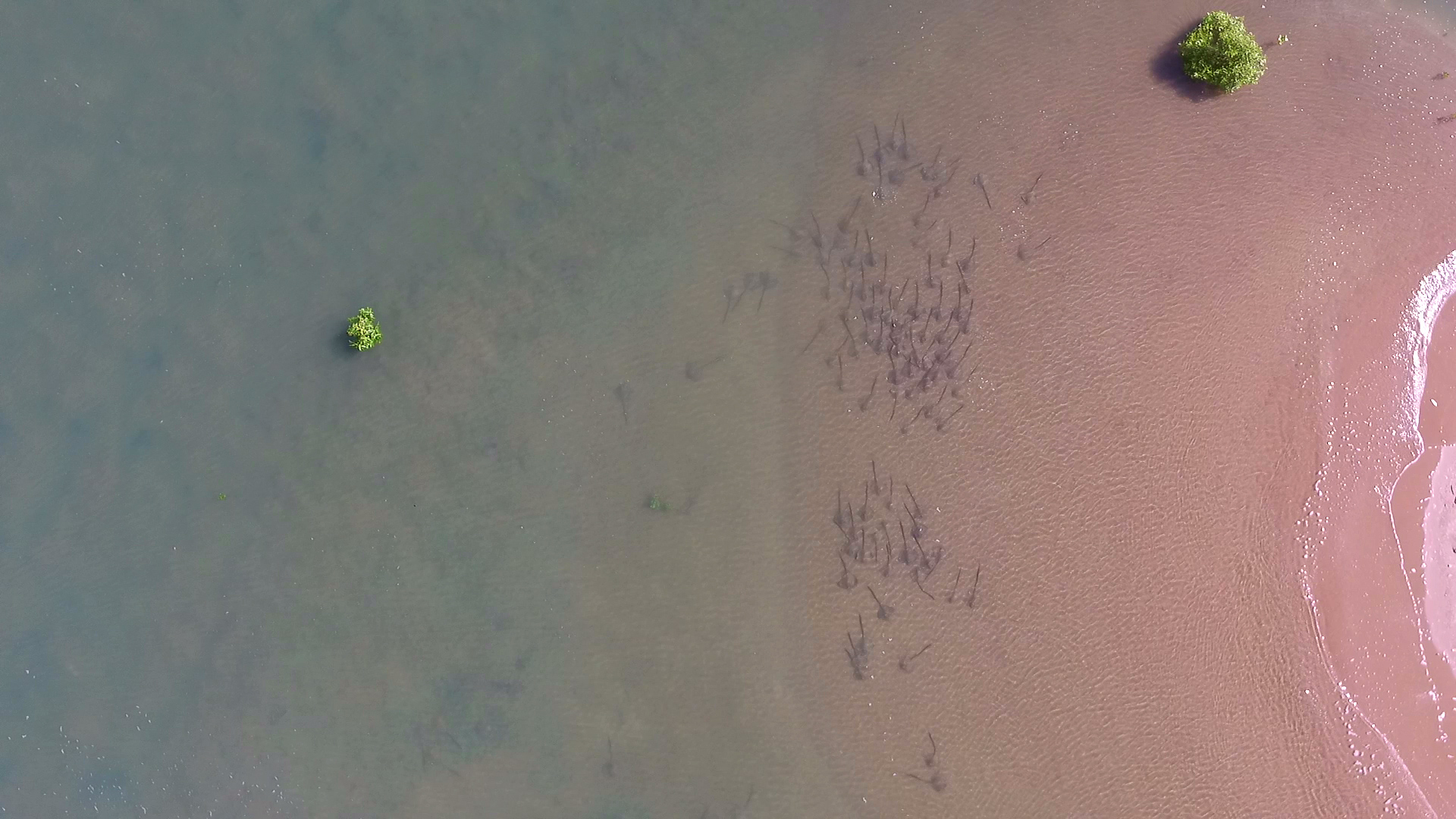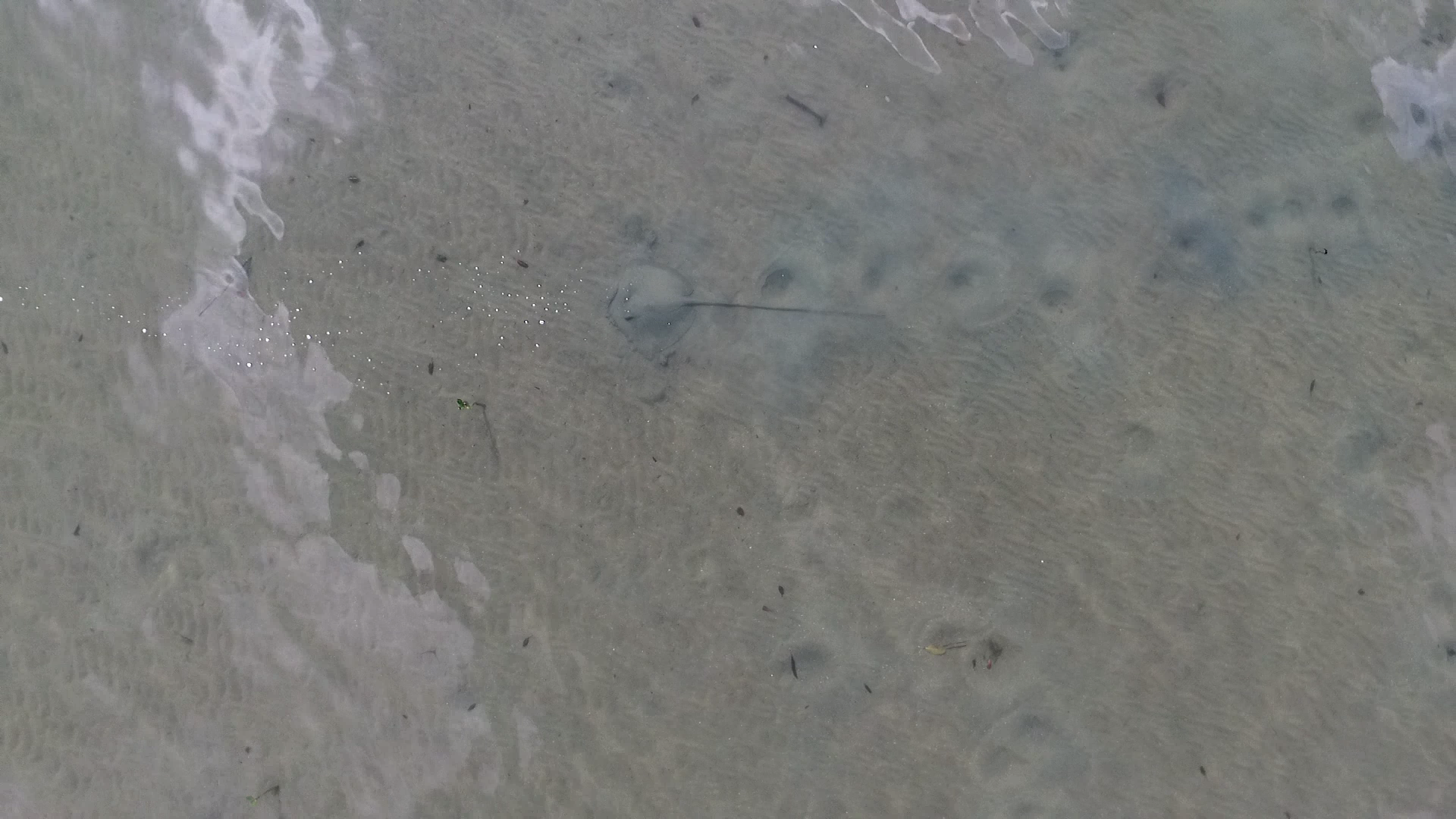Hungry hungry stingrays
How many times have you observed a predator perform a natural feeding event? The answer is probably not very many. This is because observing natural predation events in nature is rare due to the limited time we spend observing individual animals. Observing natural predation events of marine animals is even less common as predation events typically take place below the surface. As a result, our knowledge of when, where, and how many times per day marine predators feed is lacking for many species despite the importance of foraging in the ecology of animals.

Large aggregation of cowtail stingrays at Lucinda, Queensland. Photo © Kevin Crook
Stingrays are among the most common predators that inhabit coastal sandflats. These areas are important foraging grounds for stingrays as can be evidenced by the numerous feeding holes left on the sandflat when the tide goes out. Stingrays are benthic foragers that use a combination of suction, jetting water from their mouth and gills, and fin flapping to dig invertebrates from the sediment. In my previous blog post, I discussed how feeding pit sizes are more influenced by the time spent foraging and the foraging behaviour observed than by the size or species of stingray based on 324 measured feeding pits. You might have been wondering, how many stingrays were responsible for these 324 feeding pits? Was it more or less than 324 stingrays?

Australian whipray. Photo © Kevin Crook
From the outside looking in, it is reasonable to assume that individual stingrays make more than one feeding pit over the course of a tidal cycle. At the same time, it is also reasonable to assume that limited observation time would make it unlikely to observe a feeding event due to the rarity of observing natural feeding events. However, in the case of stingrays, the former is more common than the latter.

Screenshot of a foraging Australian whipray with a trail of eight recently made feeding pits behind it. Photo © Kevin Crook
The 324 measured feeding pits were actually a subset of 762 feeding events observed from drone tracks of 125 individual stingrays. Assuming foraging rates are constant among individuals, this averages out to ~6 feeding pits per individual or ~25 feeding pits per hour; however, individual foraging rates were highly variable. Twenty-three stingrays did not make any feeding pits but 27 were observed making more than 10 feeding pits in only 15 minutes. The variation in feeding among individuals can partially be explained by species. Of the two species we monitored, the Australian whipray (Himantura australis) made, on average, three times as many feeding pits as the cowtail stingray (Pastinachus ater), 36 and 12 feeding pits per hour, respectively.
Why do we care? Well, the sediment disturbance caused by stingray foraging is an important ecosystem process. Foraging activity releases nutrients trapped in the sediment and at the same time oxygenates the subsurface sediment layers. Additionally, the pits created collect organic matter and help spread out nutrient delivery in relatively nutrient-poor systems. The difference in foraging rates among species suggests that the Australian whipray may play a more important role in the ecosystem than the cowtail stingray; however, differences in abundance and fine-scale habitat partitioning will also influence the species’ roles. Stay tuned for more.
